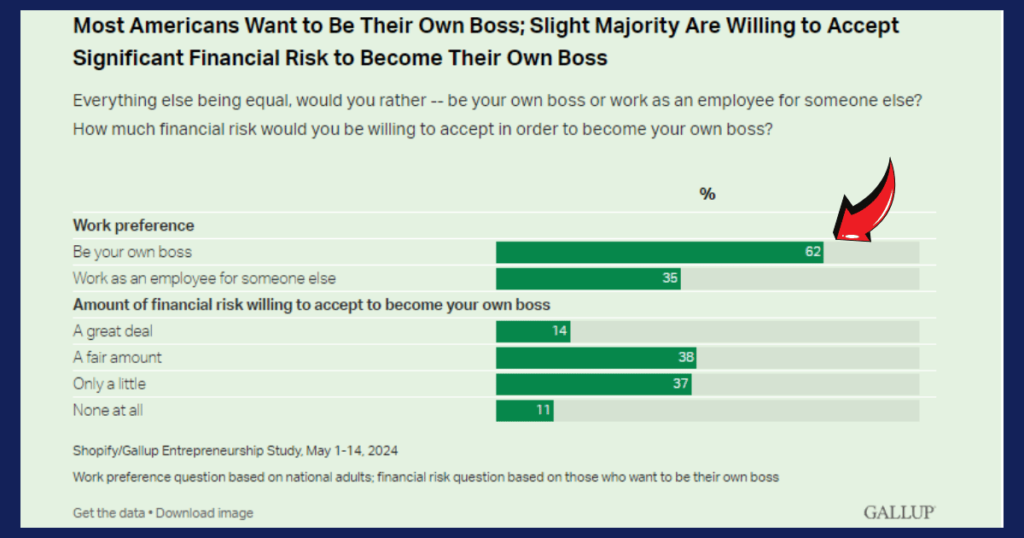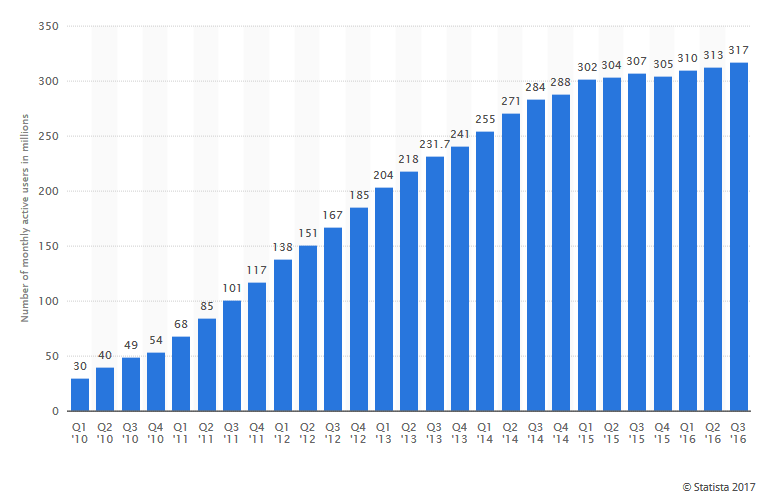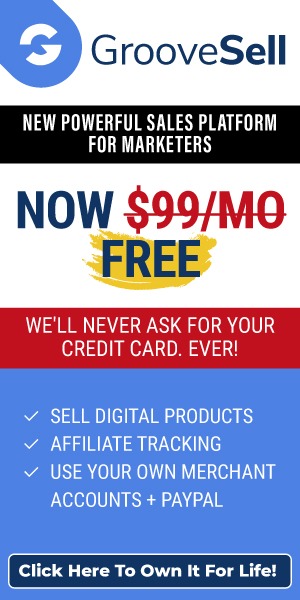
How to Start a Side Hustle While Working Full-Time in 2025 and Stay Balanced
How to Start a Side Hustle While Working Full-Time in 2025 and Stay Balanced
Starting a side hustle while holding down a full-time job might sound overwhelming, but it’s completely doable. In 2025, the opportunities to make extra income or pursue your passion are endless—it’s a golden era for go-getters like you.
Whether your goal is to pay off debt, build savings, or turn that hobby into something bigger, juggling both is easier than you think with the right plan.
As for me, I decided to go on this journey to build up my retirement funds. I wish to create a passive income that requires little of my time and can be automated most of it. This would allow me to spend my time with my family, travel the world and savour the cuisine de monde.
I went on a journey find out how to start a side hustle. Believe me it was not easy, I wish things would be simple but I did run into a lot of road blocks.
This guide will show you how to get started, stay organized, and avoid burnout. Ready to make the most of your time and energy? Let’s jump in.
Table of Contents
Understanding the Side Hustle Landscape in 2025
Side hustles are no longer just a “hustle”. In 2025, they’re shaping into meaningful income streams or even ticket paths to full-time freedom. If you’re working full-time but want to try something fresh, you’re in the right place.
Technology and changing work styles are opening new doors every year, making it easier for anyone to jump in.
Popular Ideas On How To Start A Side Hustle
Looking for inspiration? These are some of the most buzzworthy side hustles for 2025. People are earning extra cash—and sometimes quitting their day jobs—with these:
- Freelancing: Writing, graphic design, social media management, and programming are still in demand. Platforms like Upwork and Fiverr make finding gigs simple.
- E-commerce: Selling products on Amazon, Etsy, or your own Shopify store is thriving, especially if you can tap into niche markets.
- Content Creation: From YouTube videos to TikToks, creating engaging content opens the door to ad revenue, sponsorships, and brand deals.
- Online Teaching: Share your knowledge in fields like coding, cooking, or language skills. Platforms such as Udemy and Teachable are growing.
- Subscription Services: Create paid newsletters or digital communities. With Substack and Patreon, you can monetize your expertise or passion.
- Gig Economy Jobs: Driving for Uber, delivering with DoorDash, or renting out your car or space on Turo and Airbnb can bring in steady cash.
- Personal Branding: Building your unique brand on platforms like Instagram and LinkedIn can lead to consulting opportunities.
Why are these booming? Flexible schedules, global outreach, and a chance to capitalize on your skills. You can pick what fits your interests and time best.
More than anything, it allows you to experiment various ways on how to start a side hustle, without you having to quit your job. It can be done during the evenings or even on weekends. The flexibility is huge.
 Photo by Antoni Shkraba
Photo by Antoni Shkraba
Why Start a Side Hustle Now?
Why not wait? Easy—2025 might just be the best time to jump in. Here’s how to start a side hustle alongside your full-time job and make this the smartest move you ever made:
- Financial Security: Prices are rising, and extra income can help you handle inflation without stress. A successful side hustle can also fast-track your financial goals—whether it’s paying off debt, building an emergency fund, or saving for a dream vacation.
- Skill Development: Did you know that your side hustle could make you more valuable at your day job, too? For example, managing an Etsy shop might sharpen your marketing skills, or building a blog could strengthen your writing. You’re essentially building a real-world portfolio that employers value.
- Creativity and Fulfillment: Feeling stuck in your 9-to-5? A side hustle lets you explore passions that don’t fit into your daily grind. It’s your chance to do something for you.
- Future-Proofing Your Career: Jobs evolve, and industries change. Having a second income can prepare you for unexpected layoffs or career pivots. Plus, many side hustles have the potential to scale, creating a safety net.
The real question? Why did you not start yet? Have you researched on how to start a side hustle, there are plenty of tools, resources, and plenty of success stories to pull inspiration from.
So, what’s stopping you?
Creating Your Side Hustle Plan
A great idea is just the starting point—success lies in a solid plan. Think of your side hustle as a mini business. Without focus and structure, it’s easy to lose time and energy.
Let’s break this down so you can take actionable steps.
Setting Clear Goals
Without clear goals, you’re driving without a destination. Setting SMART goals makes everything manageable. These are Specific, Measurable, Achievable, Relevant, and Time-bound—your secret to staying on track.
- Specific: Be clear about what you want to achieve. Instead of saying, “I want to make extra money,” say, “I want to earn $500 per month from my side hustle by December.”
- Measurable: Numbers don’t lie. Track progress (revenue, sales, hours worked) to know if you’re succeeding.
- Achievable: Set realistic goals. Don’t aim to earn six figures in the first month. Start with goals you can actually hit.
- Relevant: Make sure it aligns with your larger goals. Is this hustle helping you pay debt, save, or learn new skills?
- Time-bound: Deadlines keep you focused. Break long-term goals into smaller milestones with specific due dates.
Once your goals are clear, write them down. Studies show you’re 42% more likely to achieve written goals. Why leave it to chance?
Identifying Your Skills and Interests
Your side hustle should play to your strengths. Why? Because starting something from scratch is much easier when you enjoy it and have some skill. Take a few minutes to think about:
- What You’re Good At: Do you have skills people would pay for? Maybe you’re great at writing, designing, or teaching.
- What You Love: What do you enjoy doing? Turning a hobby into cash can be the ultimate win.
- What Problems You Could Solve: What value can you offer? If you solve a need, people are more likely to pay.
For example, if you’re a whiz at spreadsheets and you enjoy organization, a bookkeeping side hustle might be perfect. Or, if photography is your jam, you could start selling your photos or offering shoots part-time.
Match your interests to opportunities—it makes the process much smoother.
Researching Your Market
Jumping into a side hustle without understanding your market is like fishing without bait. You need to know your target audience and what your competitors are doing to succeed.
Here’s how to start a side hustle with proper market research:
- Know Your Audience: Who are you helping? What problems do they have, and what solutions are they looking for? If you’re unsure, start small—ask friends, run surveys, or check online communities.
- Study Your Competitors: Look at others in your space. What works for them? What gaps exist that you could fill? Tools like Google Trends, social media, or even browsing Facebook groups can provide great insights.
- Test the Waters: Before going all in, validate your idea. Offer your service to a small group, create a simple product, or run a trial.
Market research doesn’t have to be complicated. Just stay curious and keep your ears open. The more you understand, the better you can tailor your side hustle for success.

Photo by RDNE Stock project
By setting clear goals, playing to your strengths, and understanding your market, you can build a sound plan that gets results.
Managing Your Time Effectively
Balancing a full-time job and a side hustle isn’t easy, but it’s not impossible. With the right approach, you can maximize your time without feeling like you’re running on empty. Let’s break it down into manageable pieces so you can thrive in both worlds.
Creating a Schedule
If you don’t tell your time where to go, it’ll slip through your fingers. The first step to managing your time is a rock-solid schedule. Treat your side hustle like a second job—it deserves the same level of commitment.
Here’s how you can create a weekly schedule that works:
- Use Time Blocks: Divide your day into sections for specific tasks. Assign hours for work, side hustle, and personal time.
- Identify Your Peak Energy Hours: Are you a morning person or a night owl? Use your most productive hours for hustle-related tasks that need focus.
- Minimize Wasted Time: Audit your day and cut back on unnecessary activities. Scrolling social media or binge-watching? Trim it down.
- Commit to Weekly Planning: Spend Sunday planning your week. Look at your work obligations, side hustle priorities, and personal responsibilities.
- Stay Flexible: Life happens. Build buffer time in your schedule so you’re not scrambling when something unexpected pops up.
Automation can also be your best friend here. From scheduling emails to setting reminders, apps like Google Calendar, Notion, or even a simple planner can keep you on track.

Photo by Los Muertos Crew
Your calendar isn’t just about work—it’s also about rest and play. A balanced schedule keeps you energized instead of overwhelmed.
Avoiding Burnout
Burnout is real, and if you’re running on fumes, neither your job nor your hustle will thrive. Protecting your energy is just as important as making money or reaching your goals.
Here are some tips to stay motivated and avoid burnout:
- Prioritize Self-Care: Sleep, nutrition, hydration, and exercise aren’t optional. Treat yourself like a human, not a robot.
- Set Boundaries: Communicate your availability clearly to clients, colleagues, and even friends. Protect your “off” time.
- Batch Tasks: Combine similar tasks to avoid jumping between different types of work, which can drain energy.
- Celebrate Small Wins: Every milestone—big or small—is worth celebrating. Progress fuels motivation.
- Learn to Say No: You can’t do it all, and that’s okay. Focus on what matters most.
Also, make time for guilt-free relaxation. Whether it’s a Netflix night, a quick walk, or a trip to the coffee shop, a break can recharge your creativity and focus. Remember, you’re running a marathon, not a sprint.
By managing your time effectively and protecting your mental energy, you’ll set yourself up for success without sacrificing your sanity.
The key is balance—because hustling hard doesn’t mean burning out.
Funding Your Side Hustle
Starting a side hustle is exciting, but let’s be real—you’ll need some cash to get it off the ground. The good news? Funding doesn’t have to mean draining your savings or relying solely on luck. Here’s how you can strategically manage your initial costs and snag some extra funds when needed.
Bootstrapping Your Business
Bootstrapping means building your hustle with what you already have—minimal outside funding and a lot of creativity. It’s resourceful and keeps you in control. The best part? You can start today without waiting on anyone to say yes.
Here’s how to start a side hustle by bootstraping smartly:
- Start Small: Avoid splurging on things you don’t absolutely need. Work from home instead of renting office space.
- Use Free Tools: Leverage free software like Canva for design, Google Workspace for productivity, or even free trials of premium apps.
- Monetize Fast: Test your business idea with a no-frills version. Sell services like consulting or freelancing to build cash flow.
- Reinvest Earnings: Don’t spend your first dollar of profit. Pump it back into your business to grow step by step.
Bootstrapping pushes you to think lean and act fast. It’s not about doing without—it’s about making smart choices that stretch every dollar further.
Exploring Crowdfunding and Loans
Sometimes, you need a financial boost to kick things off or scale your side hustle. If that’s the case, crowdfunding platforms and small business loans can help.
The content on Nurulchowdhury.com is intended for informational purposes only and does not constitute financial advice. Readers are encouraged to conduct their own research and exercise due diligence before pursuing any actions or decisions. For guidance tailored to your specific circumstances, it is recommended to consult with a qualified CPA or attorney.

Photo by RDNE Stock project
Crowdfunding Platforms
Crowdfunding lets you raise money from a community of supporters without taking on debt. You get the funds, and they feel part of your success.
Some platforms to check out:
- Kickstarter: Best for creative projects like art, books, or product prototypes.
- GoFundMe: Great for personal projects or businesses with a strong community focus.
- Indiegogo: Offers more flexibility with both all-or-nothing and partial funding options.
To succeed, craft a clear pitch. Tell your story, show how the funding will help, and reward backers with perks like exclusive access or early products.
Small Business Loans
If crowdfunding isn’t your style, loans are another tried-and-true option. You don’t need a Fortune 500-grade credit score—just a solid plan.
Here are a few places to start:
- Local Credit Unions: They often have lower interest rates and are friendlier to small business owners.
- Online Lenders: Platforms like Kiva or Lendio offer microloans specifically for budding entrepreneurs.
- SBA Microloans: The Small Business Administration offers loans up to $50,000 with manageable terms.
Be cautious, though. Borrow only what you’re confident about repaying. Loans should be a step up, not a weight dragging you down.
By bootstrapping creatively or tapping into external funding, you’ll be set up to grow your hustle without unnecessary stress. It’s all about being smart with your options and staying in control of your finances.
Marketing Your Side Hustle
Promoting your side hustle is crucial to gaining customers and growing your income. Even the best ideas won’t thrive if people don’t know they exist. Let’s explore practical ways to get the word out, connect with your audience, and build your brand.
Leveraging Social Media
Social media isn’t just for memes and selfies. It’s an incredible tool to promote your hustle. Platforms like Instagram, TikTok, Facebook, and LinkedIn can connect you with your target audience quickly—and often for free.
Here’s how you can maximize your social media impact:
- Choose the Right Platform: Not all social media platforms are created equal. Use Instagram for visuals, LinkedIn for professional services, or TikTok for quirky, fun content.
- Post Consistently: Consistency builds trust. Create a schedule—whether it’s daily, weekly, or bi-weekly—so followers know when to expect your posts.
- Engage with Your Audience: Reply to comments, answer questions, and participate in relevant conversations. This builds relationships (and trust!) with potential customers.
- Use Hashtags Wisely: Hashtags help your content reach a bigger audience. Use keywords your target audience searches for, but keep it relevant.
- Experiment with Content Types: Mix it up with photos, videos, stories, and even live sessions. People love variety!
- Share Behind-the-Scenes Content: Let your audience peek into your process, failures, and wins. It makes you relatable and human—they’ll root for you.
Don’t just post and hope for likes. Watch how people engage with your content and adjust your strategy based on what works.

Photo by RDNE Stock project
Networking and Building Connections
Who you know often matters as much as what you offer. Networking can open doors, bring referrals, and help you learn from others in your field.
Here’s how to build an authentic network without being “salesy”:
- Join Industry Groups: Look for Facebook groups, LinkedIn communities, or even forums where people in your niche hang out. Engage and share value rather than just promoting your side hustle.
- Attend Local Events and Meetups: Even in a digital-forward world, face-to-face networking can leave a lasting impression. Bring business cards—or a memorable pitch.
- Collaborate with Others: Partnering with someone in your field can help you reach their audience too. Example: A graphic designer could team up with a photographer to offer complete branding packages.
- Ask for Referrals: Don’t hesitate to ask satisfied clients or friends to spread the word. People often trust recommendations more than ads.
- Use LinkedIn for Personal Branding: Optimize your profile to showcase your skills. Post updates about your side hustle progress, share insights, and engage with posts in your field.
Networking isn’t about using people—it’s about building relationships. The key is genuine interaction. Be approachable, helpful, and ready to listen!
By combining social media savvy with smart networking, you’ll be able to grow your audience and create a buzz around your hustle.
Your side hustle success starts with showing up and getting your name out there.
Scaling Your Side Hustle
When your side hustle starts gaining momentum, it’s time to think about growing it. Scaling isn’t just about making more money; it’s about working smarter, not harder. Let’s explore how you can expand your hustle like a pro.
Identifying Growth Opportunities
Scaling doesn’t happen overnight. How do you know it’s time? Look for these growth signals:
- Demand is Exceeding Supply: Are you turning down clients or struggling to meet demand? That’s a good problem to solve.
- Consistent Revenue: If your hustle brings in steady income for several months, you’re onto something.
- Positive Customer Feedback: Are clients raving about you? They’re your best proof that you’re ready for the next step.
- You’re Running Out of Time: If every free moment is consumed by your hustle, it might be time to bring in help or optimize processes.
Once you spot these signs, brainstorm ways to level up. Could you offer new products or services? Target a different audience? Or automate some of your routine tasks?
Scaling is all about finding opportunities to grow sustainably.
Outsourcing Tasks
Let’s face it—doing everything yourself is exhausting. That’s where outsourcing comes in. It helps you save time and focus on what really matters.
Wondering what to outsource? Start with these:
- Admin Tasks: Data entry, email scheduling, customer inquiries—pass them on to a virtual assistant.
- Design and Branding: Hire professionals for logos, social media graphics, or website upgrades.
- Content Creation: Delegate blog writing, video editing, or marketing materials.
- Specialized Tasks: If you’re not a tech guru, let someone else handle your website development or bookkeeping.
Outsourcing doesn’t mean losing control. Think of it as building a team. You set the tone and expectations for how things get done.
A key tip? Start small. Hire freelancers from platforms like Fiverr or Upwork for individual projects. Or, if you need ongoing help, consider part-time or hourly assistants.
And always weigh the cost versus the time you’ll save—it’s an investment, not an expense.

Photo by Oleksandra Biliak
By identifying opportunities and outsourcing strategically, you’ll create more time to grow your hustle—and your profits. Keep scaling simple, smart, and scalable!
Legal Considerations
The content on Nurulchowdhury.com is intended for informational purposes only and does not constitute financial advice. Readers are encouraged to conduct their own research and exercise due diligence before pursuing any actions or decisions. For guidance tailored to your specific circumstances, it is recommended to consult with a qualified CPA or attorney.
Before diving headfirst into your side hustle, don’t forget to check the legal stuff. It’s not the most exciting part of starting a business, but skipping it could cost you later.
Let’s make this easy to understand so you can handle it confidently.
Registering Your Business

Photo by Sora Shimazaki
Thinking about keeping things informal? Don’t. Registering your business is essential—it’s like giving your hustle a proper ID card. Here’s how you can do it right:
- Pick a Business Name: Choose something catchy and unique. Check that it’s not already in use. A quick Google search or domain name check can help.
- Choose Your Legal Structure: Most side hustlers go for one of these:
- Sole Proprietorship: The simplest option, but you’re personally liable for debts.
- LLC (Limited Liability Company): Separate your personal assets from your business. A little more work, but worth the protection.
- Partnership: If you’re starting with a friend, this might fit better.
- Register Locally or Nationally: Depending on your location, you may need to register with your city, state, or country to operate legally.
- Get a Business License (if needed): Some gigs like catering or pet grooming may need extra permits. Research what applies to your side hustle.
- Open a Business Bank Account: Don’t mix business and personal finances. A separate account keeps things clean and easy to track.
Registering your business shows you’re serious. Plus, it keeps everything above board if a client or vendor asks for legal details.
Understanding Taxes and Regulations
Play by the tax rules, or Uncle Sam will come calling. Taxes for side hustlers are a bit different than for regular jobs. Here’s what you need to know:
- Track Your Earnings: Keep tabs on every dollar you make right from the start. Use apps like QuickBooks or even a basic spreadsheet.
- Know Your Tax Obligations: You’ll need to report your earnings come tax time. In many cases, you’ll also owe self-employment tax (covering Social Security and Medicare).
- Save a Portion of Your Income: Taxes aren’t taken out automatically, so plan ahead. A good rule is to set aside 25-30% of your side hustle income for taxes.
- File Quarterly Taxes (Maybe): If you expect to owe more than $1,000 in taxes, you might need to pay estimated taxes four times a year.
- Deduct Business Expenses: Here’s the good news—many of your costs can reduce your tax bill. Think supplies, software, travel, and even part of your home office.
Finally, if your hustle deals with specific industries (e.g., food, real estate, or online retail), check for any special regulations. Ignoring them could lead to fines or worse.
Getting the legal and tax stuff sorted upfront saves you headaches down the road. It’s not glamorous, but it’s necessary. Handle it early so you can focus on growing your hustle.
What Actions Are You Willing To Take Next?
Building a side hustle while working full-time isn’t just possible—it’s empowering. You’ve got the tools, the strategies, and the mindset to make it work.
I am gradually transitioning from employee to entrepreneur and it is quite fun, because I can dedicate my time during the day as an employee as it pays my bills, and in the evenings, I am all excited to learn about how to start a side hustle that will ease my life when I retire.
Start small, stay consistent, and focus on progress over perfection. This is your chance to turn ideas into income and passions into purpose.
What’s one step you can take today to move forward? Pick it and go. The future is waiting—don’t keep it on hold.












